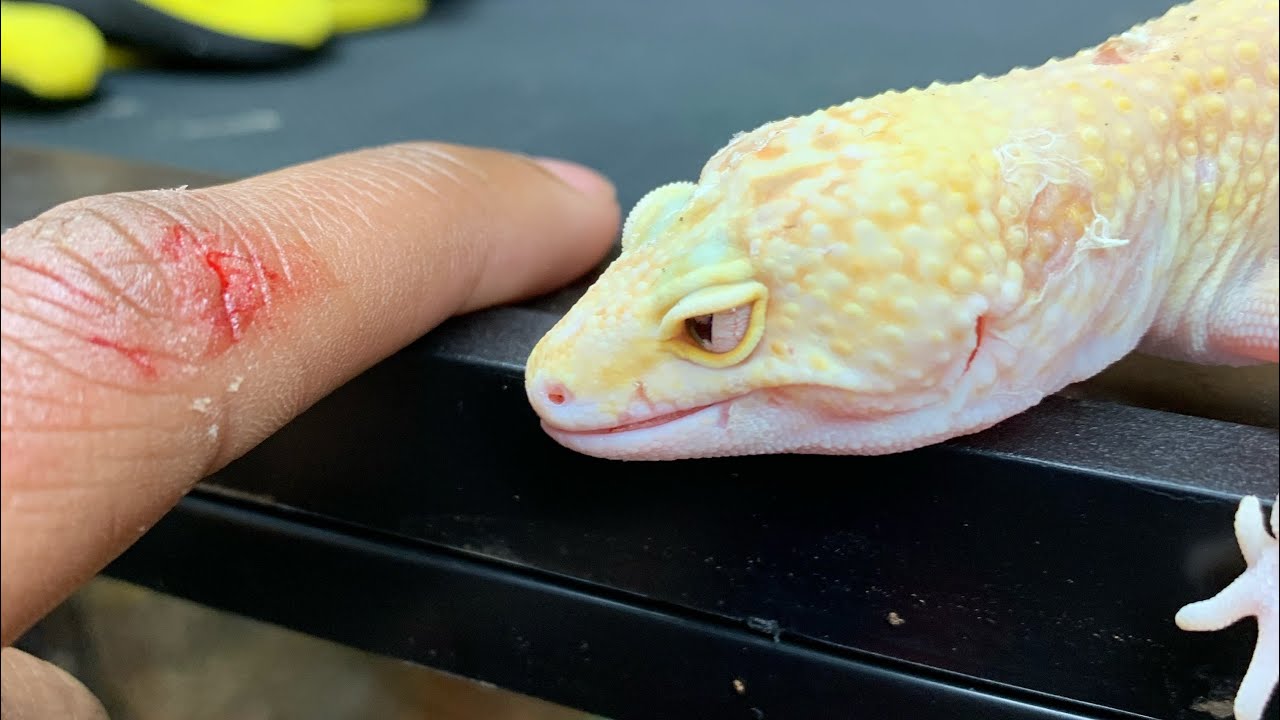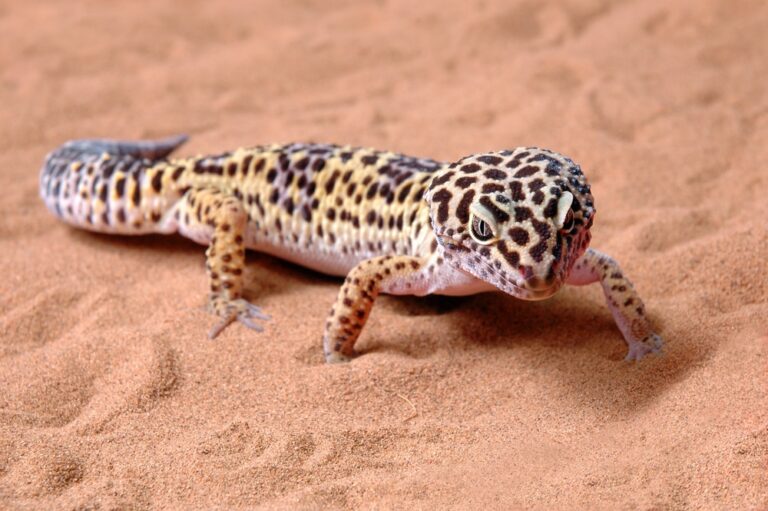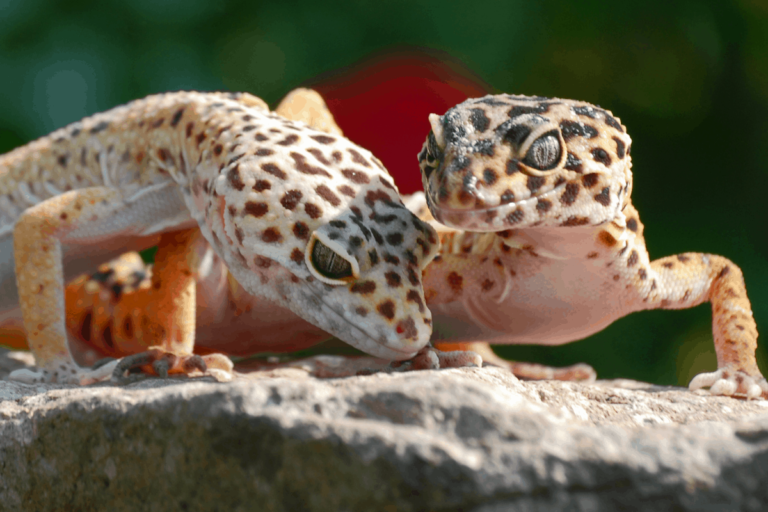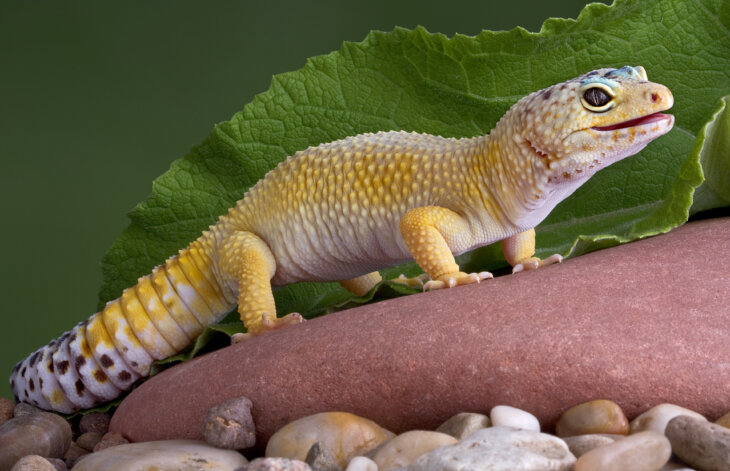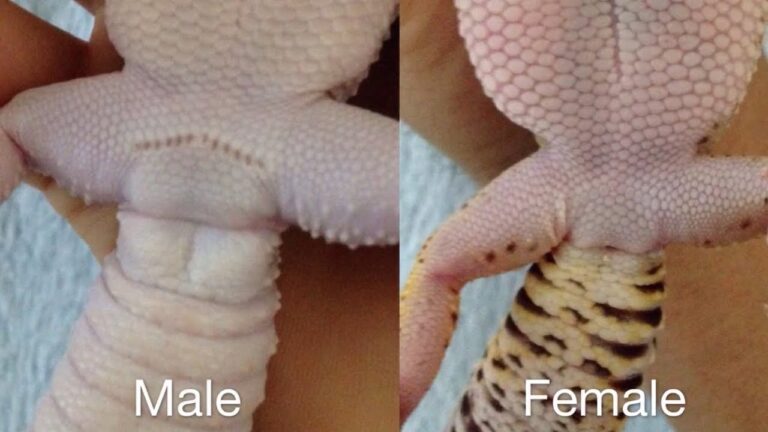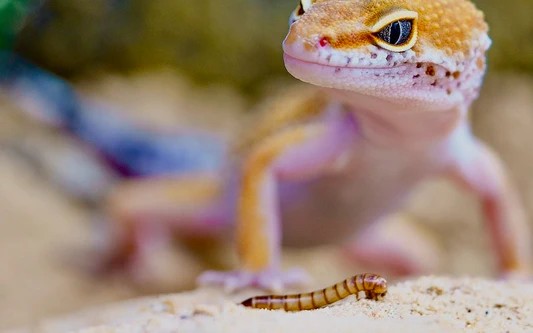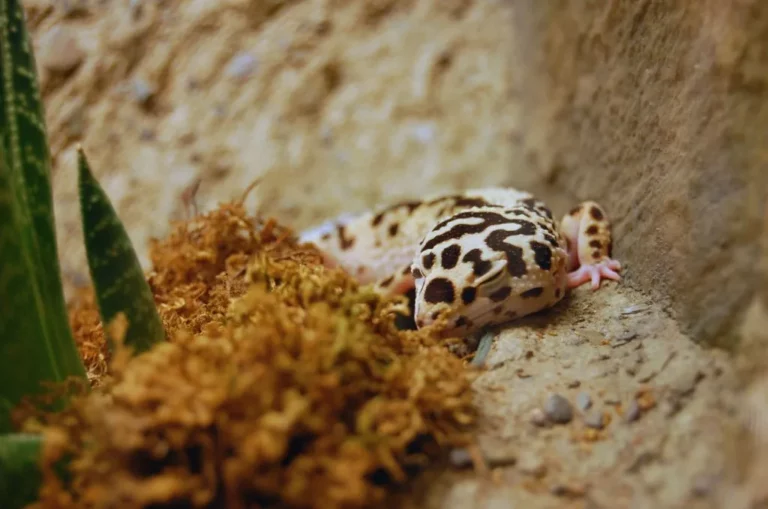Do Leopard Geckos Bite: Unraveling the Mystery of These Tiny Predators
As I embarked on my journey to become a responsible pet owner, a pressing question weighed on my mind: do leopard geckos bite? My curiosity led me to delve into the captivating world of these unique reptiles, revealing that they hold a significant place in the hearts of reptile enthusiasts.
The answer to whether they bite is yes, but it hinges on various factors, such as self-defense, mating behaviors, socialization, hunger, and more.
Nonetheless, these diminutive and captivating creatures are renowned for their striking appearance and gentle disposition, rendering them an ideal choice for those venturing into the realm of reptile ownership. Yet, like all animals, leopard geckos possess their idiosyncrasies, underscoring the importance of comprehending their behavior to foster a harmonious relationship between pet and owner.
Together, let’s embark on this journey to demystify the question surrounding leopard geckos and their biting behavior also solution.
Common Reasons for Leopard Gecko Bites
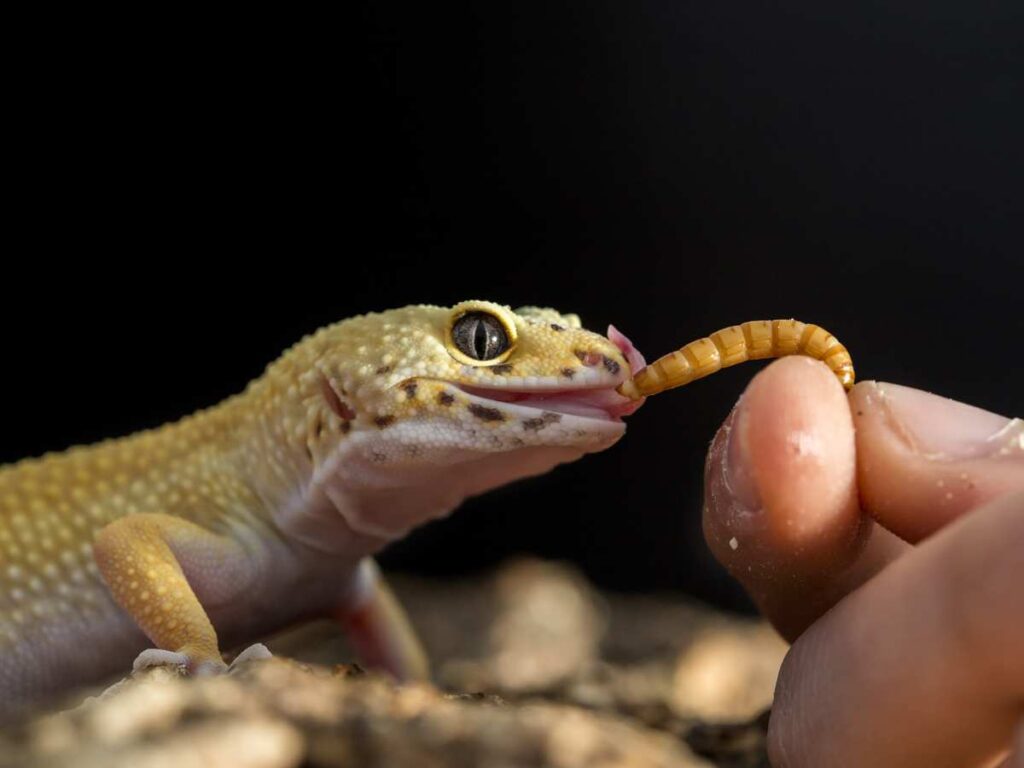
Defense:
Leopard geckos can bite if they get surprised or shocked. This often happens when they’re touched suddenly or hear unexpected loud noises. When startled, they instinctively bite to protect themselves because they feel threatened.
Further, this kind of biting is more common in young geckos, newly acquired ones, or those with eye problems. Even if you’ve had your gecko for a while, startling it can still make it bite defensively. So, when you handle your gecko, especially outside its tank, avoid suddenly touching its snout or any part of its body out of nowhere. If you startle it this way, you’re likely to get bitten.
Socialization:
Building a rapport with these creatures, like any relationship, takes time and patience. When adopting a reptile from a breeder or new environment, it’s essential to refrain from handling them for the first few weeks. Handling too soon can make the reptile feel threatened, leading it to believe it is under attack. Even the way you attempt to pick up a reptile can be crucial; grabbing it from the sides, from above, or by its tail can be perceived as predatory behavior.
Consequently, your pet may resort to biting as a defense mechanism. During the initial two weeks, limit interactions to feeding, water changes, and cage cleaning. After this adjustment period, if your pet has become accustomed to your presence, initiate handling gradually, beginning with gentle pets and short interactions, eventually progressing to being able to hold and handle it comfortably.
Hunger:
Hunger can also be a trigger for biting. If a reptile has not been fed for some time, it may mistake your finger for food, particularly if your finger resembles the size and color of its typical prey. Additionally, if your finger has supplement powder on it, the reptile might associate it with food and attempt to bite.
Usually, a pet will realize its mistake and release its grip swiftly, as it cannot consume human fingers. Another common biting scenario during feeding occurs when the pet misses its prey and inadvertently bites your hand. You can prevent these bites by using a food bowl to create distance between your hand and the reptile’s mouth.
Temperament:
These creatures, like people, have distinct personalities. Some may not enjoy being handled or interacting with humans and prefer solitude. Specimens that prefer solitude may communicate their displeasure with being held through body language, such as tail waving and high-pitched vocalizations.
Moreover, If these signs of discomfort are ignored, the reptile may resort to biting as a last-ditch effort to communicate its discomfort. While not all pets will bite, some may do so sooner than others based on their individual personalities. It’s important to respect their preferences, and if you have a pet that is particularly defensive or resistant to handling, it’s best to minimize stress by limiting interactions.
Mating:
Housing male and female reptiles together is a practice primarily reserved for breeders. During the mating season, which typically occurs in the summer, these animals undergo behavioral changes, with males becoming more dominant, especially when housed with females.
Additionally, interrupting the courting process or approaching a male protecting a gravid female may provoke retaliatory bites as a defensive response. These behavioral shifts are usually temporary and cease once the male is returned to its enclosure.
Past Experiences:
Pets that have experienced neglect or mistreatment from previous owners may be more prone to defensive behavior, including biting. Such animals may be constantly on edge and ready to bite in response to perceived threats, even during routine care tasks such as removing a water bowl for cleaning.
In addition, creating a less stressful environment, learning about your pet’s specific needs, and taking appropriate measures can help gradually alleviate their fear and defensiveness, ultimately reducing the likelihood of biting.
Seeking Privacy:
They are usually calm and don’t display aggressive behavior like some other pet lizard species. However, they have their limits when it comes to handling. If you bother your leopard gecko too much, it might give you a gentle warning bite.
Not Used to :
Leopard geckos need time to get used to their new surroundings and the person taking care of them. They might bite in the first few weeks because they’re nervous and see you as a potential threat. To avoid getting bitten, wait at least two weeks before handling them.
Besides, during this time, only do essential tasks like cleaning and feeding, and keep these interactions calm. As time goes on, your gecko will start feeling more comfortable around you. Even after this initial period, handle them gently and don’t rush it. Be patient, and your gecko will trust you more over time.
Hand feeding :
They might bite your hands or fingers when you hand-feed them. This often happens if you’ve been regularly feeding them this way. When geckos associate food with your fingers, they might try to take a nibble.
Also, they’re more likely to bite if you move your fingers like live worms. Also, if your hands smell like their food because you’ve been handling it, your gecko might mistake your fingers for a snack. So, be cautious when hand-feeding to avoid getting bitten.
What to do Avoid Leopard Gecko Bites?
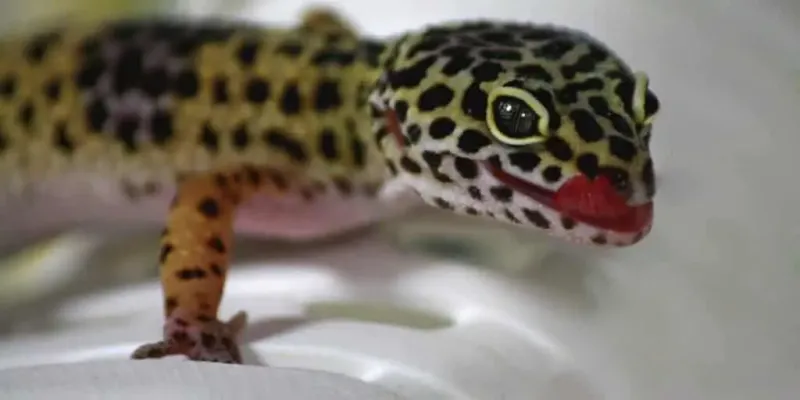
To reduce the risk of a leopard gecko bite, there are several straightforward tips and strategies to keep in mind:
1. Give Space: Initially, allow your gecko some breathing room, especially if it’s a juvenile. Wait a few weeks before attempting to handle it.
2. Gentle Handling: When you do start handling your them, always be gentle and limit handling sessions to a couple of minutes. Gradually extend the duration as your gecko becomes more accustomed to socializing.
3. Understand Behavior: Get to know their personality and watch for defensive behaviors or signs of discomfort, like tail waving or vocalizations. Understanding their body language can help you anticipate and avoid potential bites.
4. Avoid Cohabitation: It’s best not to house multiple geckos together, especially males. This can lead to territorial conflicts and increase the likelihood of getting bitten inadvertently. Only pair females with males for breeding, and avoid interrupting their courtship.
5. Be Cautious During Feeding: Beginners should use tongs or a feeding bowl when offering insects to your companion. Before handling your pet , thoroughly wash your hands and ensure there’s nothing on them that might be mistaken for food.
What To Do If You’ve Been Bitten
In case you get bitten by a leopard gecko, it’s essential to stay calm and avoid yanking away. This could harm the gecko’s mouth and potentially lead to an infection. So, firstly, don’t panic and be patient. It’s better to “take the bite” than risk hurting your gecko.
There are two safe ways to disengage from a biting gecko. The easier option is to wait for the gecko to let go on its own. However, if it doesn’t, gently running water over its mouth can help.
Once the gecko releases its bite, put it back in its enclosure. Now, check the bite area. If your skin is broken or bleeding, take appropriate steps to clean and bandage the wound. Remember, these lizards are non-venomous, so you don’t need to worry as much as you would with a more serious injury. By following these steps, you can ensure both your safety and your gecko’s well-being.
Can Their Bite Draw Blood?
No, It’s essential to recognize that the likelihood of a leopard gecko bite resulting in bleeding is exceedingly rare. This rarity is primarily attributed to the fact that leopard geckos have small, non-sharp teeth that are typically unable to penetrate human skin and cause harm.
Even in cases where the skin is thinner than usual, such as the webbing between your fingers, the likelihood of their teeth breaking the skin and drawing blood remains quite uncommon. In instances involving larger geckos, there might be a slight chance of skin piercing and blood being drawn; however, even in such cases, this occurrence remains infrequent.
If any blood does happen to be drawn from a bite, it is usually a result of movement during the biting incident. Any sudden twisting or attempting to pull away during the bite could potentially lead to the gecko’s teeth grazing the skin and causing minor cuts. Nonetheless, it’s crucial to emphasize that such occurrences are still quite unusual.
Do Leopard Gecko Bites Hurt?
No, It’s important to note that a leopard gecko’s bite is generally not very painful. In fact, many people liken it to a pinch. Additionally, depending on the size of the gecko, you might not even realize that you’ve been bitten.
Considering the dimensions of an adult leopard gecko, which can reach lengths of 7 to 11 inches with a head size of around 2 to 3 inches, it’s crucial to understand that only a small portion of this space houses the muscles responsible for biting. Consequently, their jaw muscles are relatively small, resulting in a relatively low biting force.
Interestingly, juvenile geckos, being smaller, possess an even weaker bite force, and you might not even feel their bite. What’s noteworthy is that juveniles tend to resort to biting more frequently than adults. However, even as they grow, their bite force remains relatively mild.
The duration of a bite’s hold depends on the gecko’s reason for biting. If it mistakenly thinks you’re food, it may hold on for a brief moment until it realizes the misunderstanding and lets go. In other cases, bites can serve as quick warnings and may be over before you even notice them.
FAQs
Are Leopard Geckos Poisonous?
No, leopard geckos are not poisonous. They are non-venomous and pose no toxic threat to humans or other pets.
Are Leopard Geckos Aggressive?
No, Leopard geckos are generally not aggressive but can bite when they feel threatened or stressed. With proper care and handling, aggression is rare.
Should You Be Worried If You’ve Been Bitten?
Yes, while leopard gecko bites are not usually serious, it’s essential to clean the wound to prevent infection. Monitor it for any signs of infection, but most bites heal without significant issues.
Do Leopard Gecko bites cause any harm?
Leopard gecko bites are typically not harmful and rarely cause severe harm to humans. They may puncture the skin and cause minor discomfort or swelling, but serious injuries are uncommon.
Conclusion:
To wrap up, I’ve learned that leopard geckos, although usually gentle, can bite when they feel scared or stressed. It’s important to handle them carefully and create a stress-free environment to prevent bites.
Additionally, their bites aren’t usually serious and rarely hurt humans badly. By being patient and gentle when handling them, I can build trust and reduce the chances of getting bitten.
Making sure they have a safe and comfy home and respecting their space is crucial for a good relationship with my pet gecko. It’s been interesting to learn about, and I’m committed to keeping my pet happy and safe.

